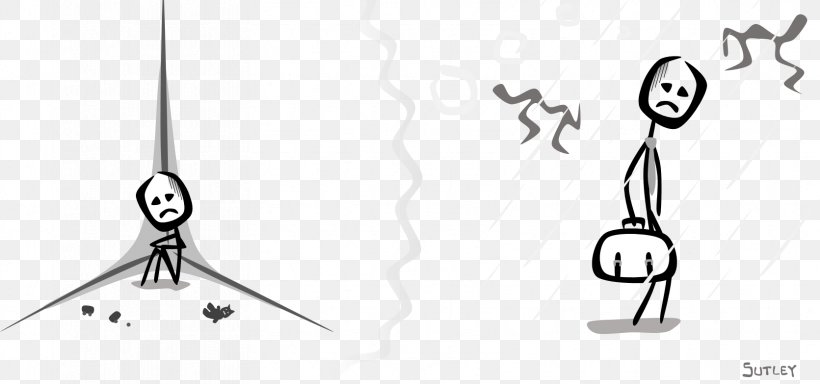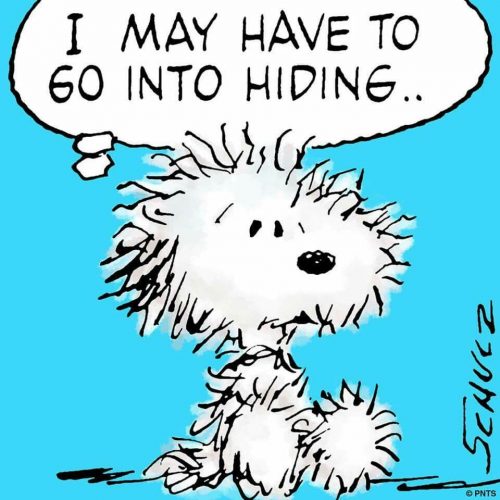In what follows, I propose a speculative chronology of developments over the coming months as we try to maintain our social distancing. The items and the order in which they appear are off the top of my head.

I welcome suggested revisions or additions. This post could evolve together with actual developments out there in the real world.
- people begin looking notably dishevelled, unkept, a consequence of having spouses cut their hair or else having to do it themselves; the upside, they aren’t supposed to go out in public so few will ever see them in this condition
- others begin to spill over their belts as they proceed to wolf vast stores of food they’ve stockpiled
- the number of infected people will continue to rise, and people will lose faith in social distancing, failing to recognize that positive results are longer term, perhaps not immediately perceptible, so they decide to break discipline and seek the company of others
- at this point the pandemic will undergo a serious uptick
- populations will see ever-more massive losses of jobs and income
- this will promote epidemic theft, social and political unrest, together with greater official measures to repress the potential for civil disorder and violence
- more and more people will personally experience deaths among friends and family
- scapegoating and expressions of racial bias will surge, as will conspiracy theories
- more and more, and more and more strictly, civil liberties will be suspended

***
Still on topic, a friend posted the following online this morning, and I believe it deserves a read. As Karen said in her cover comment:
“So much useful and useless information in Coronavirus being passed around. This one would seem to be in the first category.
From a bona fide infectious disease epidemiologist, Jonathan Smith, who posted about the progress of the disease on 3/19/20.”
‘Hey everybody, as an infectious disease epidemiologist (although a lowly one), at this point feel morally obligated to provide some information on what we are seeing from a transmission dynamic perspective and how they apply to the social distancing measures. Like any good scientist I have noticed two things that are either not articulated or not present in the “literature” of social media. I am also tagging my much smarter infectious disease epidemiologist friends for peer review of this post. Please correct me if I am wrong (seriously).
Specifically, I want to make two aspects of these measures very clear and unambiguous.
First, we are in the very infancy of this epidemic’s trajectory. That means even with these measures we will see cases and deaths continue to rise globally, nationally, and in our own communities in the coming weeks. Our hospitals will be overwhelmed, and people will die that didn’t have to. This may lead some people to think that the social distancing measures are not working. They are. They may feel futile. They aren’t. You will feel discouraged. You should. This is normal in chaos. But this is also normal epidemic trajectory. Stay calm. This enemy that we are facing is very good at what it does; we are not failing. We need everyone to hold the line as the epidemic inevitably gets worse. This is not my opinion; this is the unforgiving math of epidemics for which I and my colleagues have dedicated our lives to understanding with great nuance, and this disease is no exception. We know what will happen; I want to help the community brace for this impact. Stay strong and with solidarity knowing with absolute certainty that what you are doing is saving lives, even as people begin getting sick and dying. You may feel like giving in. Don’t.
Second, although social distancing measures have been (at least temporarily) well-received, there is an obvious-but-overlooked phenomenon when considering groups (i.e. families) in transmission dynamics. While social distancing decreases contact with members of society, it of course increases your contacts with group (i.e. family) members. This small and obvious fact has surprisingly profound implications on disease transmission dynamics. Study after study demonstrates that even if there is only a little bit of connection between groups (i.e. social dinners, playdates/playgrounds, etc.), the epidemic trajectory isn’t much different than if there was no measure in place. The same underlying fundamentals of disease transmission apply, and the result is that the community is left with all of the social and economic disruption but very little public health benefit. You should perceive your entire family to function as a single individual unit; if one person puts themselves at risk, everyone in the unit is at risk. Seemingly small social chains get large and complex with alarming speed. If your son visits his girlfriend, and you later sneak over for coffee with a neighbor, your neighbor is now connected to the infected office worker that your son’s girlfriend’s mother shook hands with. This sounds silly, it’s not. This is not a joke or a hypothetical. We as epidemiologists see it borne out in the data time and time again and no one listens. Conversely, any break in that chain breaks disease transmission along that chain.
In contrast to hand-washing and other personal measures, social distancing measures are not about individuals, they are about societies working in unison. These measures also take a long time to see the results. It is hard (even for me) to conceptualize how ‘one quick little get together’ can undermine the entire framework of a public health intervention, but it does. I promise you it does. I promise. I promise. I promise. You can’t cheat it. People are already itching to cheat on the social distancing precautions just a “little”- a playdate, a haircut, or picking up a needless item at the store, etc. From a transmission dynamics standpoint, this very quickly recreates a highly connected social network that undermines all of the work the community has done so far.
Until we get a viable vaccine this unprecedented outbreak will not be overcome in grand, sweeping gesture, rather only by the collection of individual choices our community makes in the coming months. This virus is unforgiving to unwise choices. My goal in writing this is to prevent communities from getting ‘sucker-punched’ by what the epidemiological community knows will happen in the coming weeks. It will be easy to be drawn to the idea that what we are doing isn’t working and become paralyzed by fear, or to ‘cheat’ a little bit in the coming weeks. By knowing what to expect, and knowing the importance of maintaining these measures, my hope is to encourage continued community spirit, strategizing, and action to persevere in this time of uncertainty.'”

